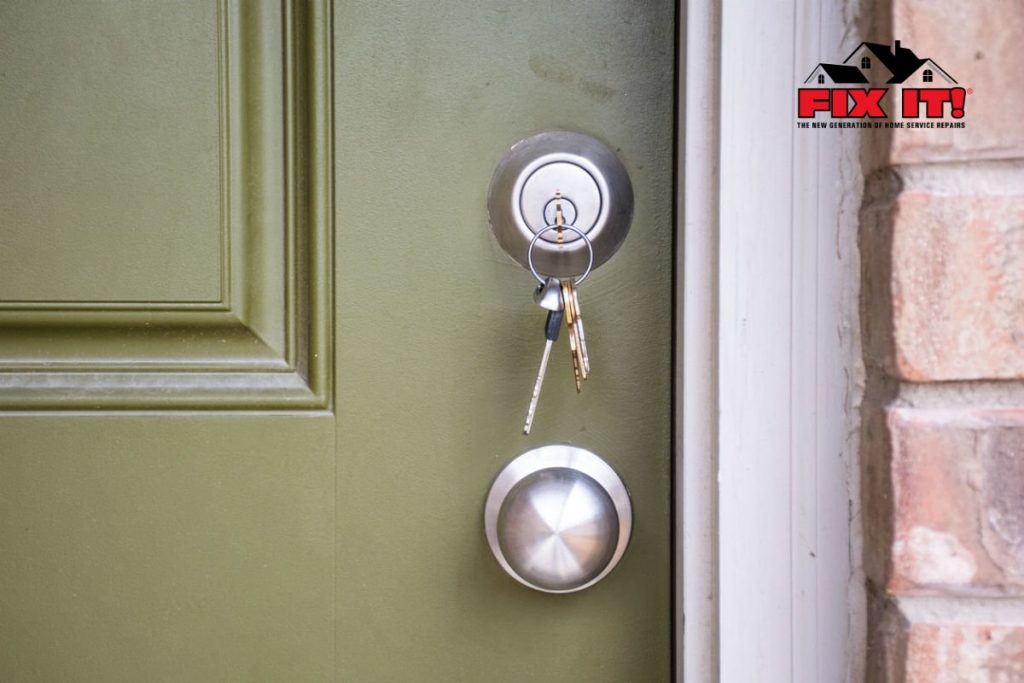Thinking about changing out the locks to improve your home’s security? Start here for a better grasp on when—and how—to rekey rather than replace them altogether.
Key rings can get crowded (and heavy!) fast, when you consider all that you load up on them: keys for your car, front door, side door, back door, mailbox, maybe even your mother-in-law’s, and a handful of miniature rewards cards sized and punched to conveniently hang. Carrying that whole lot will cause your pockets to jingle with each step and you to waste precious minutes every day fumbling for the correct copy to the door or locker you are interested in opening. Fortunately, rekeying a few of your locks offers an easy, affordable, and even DIY solution can lighten your load. Understand when, why, and how to rekey a lock with this handy guide.
What it Means to Rekey a Lock
A pin and tumbler lock—the kind of lock found on locking doorknobs and deadbolts—contains a steel cutaway that holds a cylindrical plug and a number of springs and pins that allow a specific key shape to turn in the lock. In order for a key to turn the locking mechanism, the configuration of the pins must match the depth of the unique grooves on that key.
When you want the lock to open with a different existing key—say, so you no longer want to use separate keys to enter the front, back, and side doors—the lock must be disassembled and the pins, which are of various heights, removed and replaced by new pins that match the cuts and grooves in the new key.
Reasons to Rekey a Lock
As mentioned, rekeying makes most sense for homeowners who prefer to have a single key that opens all of their door locks to the home or apartment. This process can lighten a full key ring to a few essentials, taking up less space in your pocket or bag as well as less time spent searching for the right one.
However, rekeying a lock can also improve a building’s security measures. After a new home construction—during which a number of people might have copies of door keys, including contractors, subcontractors, and inspectors—new homeowners may want to make sure they have the only keys to their home before they take possession. Likewise, it’s also a common practice for landlords and property managers to have door locks rekeyed every time a new resident moves in. Whether you’re moving into a previously owned home or have simply misplaced a set of spare keys, rekeying is an alternative to replacing the lock altogether that provides the peace of mind that comes with knowing no one else has a key to your home.
When to Replace a Lock Versus Rekeying
Both replacing and rekeying a lock effectively change out a lock to limit access, but there are some cases in which you have to go through the motions of both processes.
• If you’ve lost the key that opens your existing lock(s), you won’t be able to disassemble the lock for rekeying. First replace the lock.
• Rekeying won’t fix a worn or damaged lock. You’ll probably have to replace the lock with a cracked or warped locking mechanism soon, anyway, so consider doing so first. Then, if your goal was to change the locks so that you have the only key, you’re set; you only need to rekey if you want multiple locks to share one key.
• When rekeying multiple locks to fit a single key, all locks must first have been made by the same manufacturer. For example, if your front door lock is a Schlage, the other locks you want rekeyed to match must also be made by Schlage. You cannot rekey a Kwikset or Sargeant lock to open with the same key as a Schlage lock, because different brands of locks have different size keyholes that only accept their own keys. If you’re dealing with multiple lock brands, you’ll need to decide on one and replace the others to match this brand before rekeying.
Get Help
Call or Text Fix It!® Handyman at (508) 305-2055 if You need help. You may also use our online form to let us know specifically what you need and even request special projects in the notes section.



